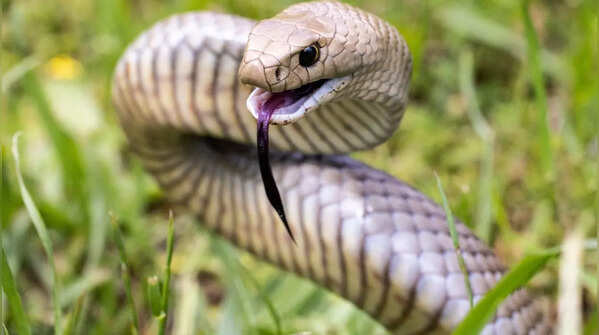Top 10 most dangerous snakes in the world

Top 10 most dangerous snakes in the world
Snakes have long been interesting and fearsome to people across the world. While many species are harmless and play vital roles in balancing ecosystems, a few are dangerous with venom so toxic it can kill in minutes. Some rely on slow speed and precision and the others on speed. The world’s most dangerous snakes aren’t necessarily the biggest or the most aggressive, instead it’s often their venom, unpredictability, and how they behave with the humans thats what truly makes them deadly.
These snakes can be found across deserts, forests, and even near human settlements. Despite our fears, they rarely attack unprovoked. Still, knowing which species pose a real threat is important for safety, especially in areas where human-snake encounters are common.
Here are ten of the most dangerous snakes on Earth

Inland taipan
Known as the most venomous snake in the world, the inland taipan is native to Australia. Just one bite contains enough venom to kill over 100 humans, but it’s shy and rarely seen, often hiding in deep cracks or burrows in arid regions. Despite its terrifying venom, it’s not responsible for many human deaths, simply because it lives in remote areas and avoids conflict. But if provoked, its bite can be fatal in less than an hour.

Eastern brown snake
Also found in Australia, the eastern brown snake is extremely fast, aggressive when threatened, and responsible for more deaths in the country than any other snake. Its venom affects the nervous system and blood clotting, making bites quickly dangerous. It often lives near human environments like farms or suburbs, increasing the risk of encounters. It’s juveniles can be just as deadly as adults, with venom that’s equally potent.

Black mamba
Africa’s deadliest snake, the black mamba, is feared for its speed, aggression, and highly toxic venom. It’s not black but named for the inky coluor inside its mouth. It can move at speeds of up to 12 mph and strikes multiple times in one attack. It’s bite can be really fatal wthout prompt antivenom, it is majorly found in savannas and rocky hills.

King cobra
The world’s longest venomous snake, the king cobra can grow up to 18 feet. It’s intelligent, can recognise handlers, and is widely known for its powerful neurotoxic venom, which can kill an elephant. Native to South and Southeast Asia, it prefers to flee rather than fight but becomes fiercely defensive during mating season or when guarding eggs. Its hood flare and loud hiss are unmistakable signs to back off.

Russell’s viper
Responsible for thousands of deaths across Asia, especially India, Russell’s viper is one of the "big four" snakes that account for the most human fatalities in the region. It’s not only venomous but also common near human settlements. Its bite causes extreme pain, swelling, kidney failure, and in some cases, internal bleeding. It remains still and strikes suddenly when stepped on or disturbed.

Saw-scaled viper
The small size of the snake might be deceptive but the saw-scaled viper, found across Africa and Asia, is considered one of the deadliest snakes due to its aggressive nature and tendency to live in populated areas. It gets its name from the rasping sound it makes by rubbing its scales together as a warning. Its venom causes hemorrhaging and tissue damage. Many people are bitten because they accidentally step on it at night or while farming.

Boomslang
This deceptively docile shy-looking African snake has a venom that causes internal and external bleeding. The boomslang has rear fangs and usually needs to open its jaws wide to bite, but when it does, its potent hemotoxin can be fatal. Symptoms may take hours to appear, leading victims to delay treatment. The famous herpetologist Karl Schmidt died from a boomslang bite after initially thinking it wasn’t dangerous.

Banded krait
This snake, found across India and Southeast Asia, is nocturnal and shy, but its venom is a powerful neurotoxin. Although it rarely bites unless provoked, it strikes quietly, which makes it really fatal. Its vivid black and yellow stripes warn predators and humans to stay away. The banded krait is considered one of Asia’s deadliest snakes, though its habits mean it’s less likely to cause fatalities than more aggressive species.

Philippine cobra
One of the few cobras that can spit venom, the Philippine cobra can accurately hit a target’s eyes from several feet away. Its venom targets the nervous system, causing respiratory failure. Despite its deadly abilities, it’s usually not aggressive unless cornered. Found in fields, rice paddies, and villages, it’s feared across the Philippines, not just for its bite, but for its ability to blind or paralyze from a distance.

Tiger snake
Native to southern Australia, the tiger snake is according to the banded pattern on its body. Its venom is fast-acting and affects the nervous system, blood, and muscles. Bites cause pain, paralysis, and even death if untreated. Tiger snakes are commonly found near water and can be aggressive if disturbed. They are responsible for numerous bites each year and are feared particularly in Tasmania and coastal regions of the mainland.









